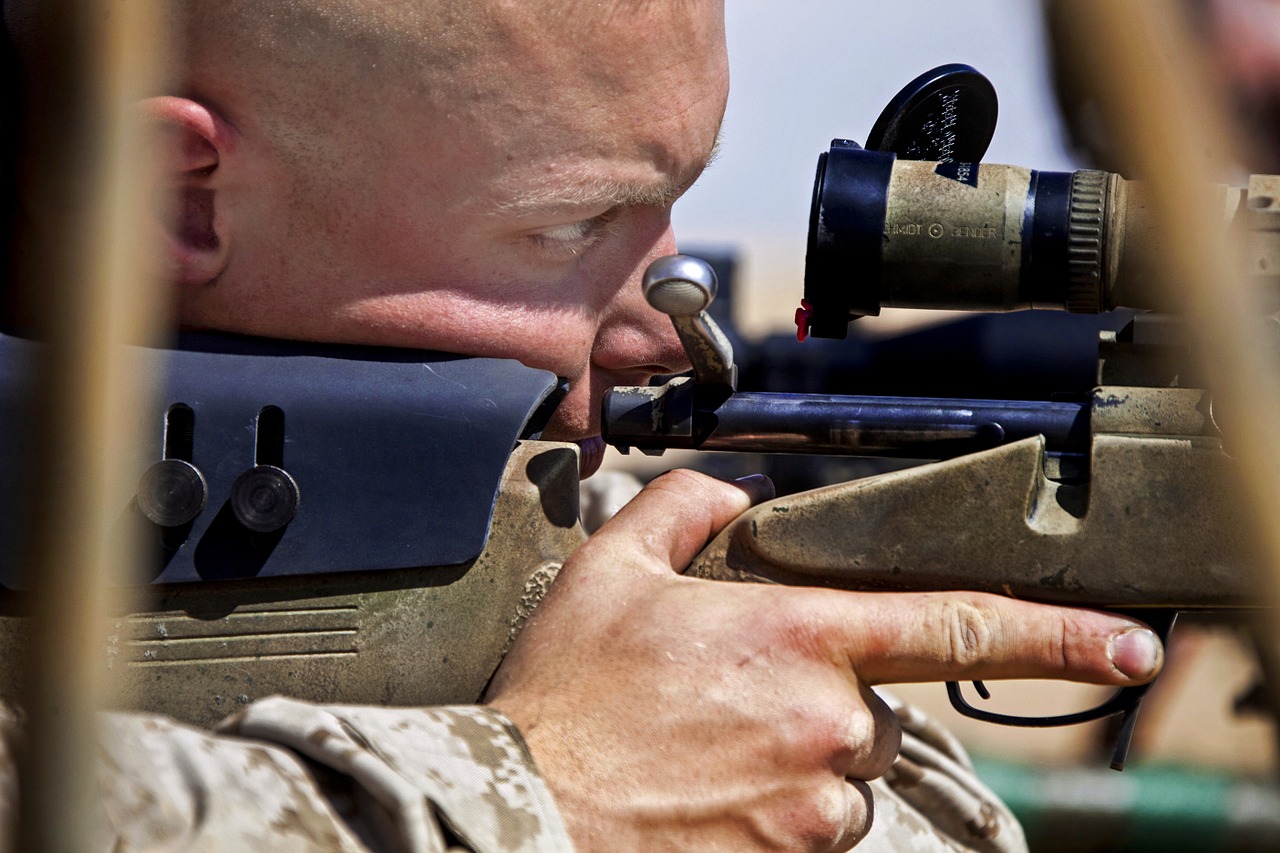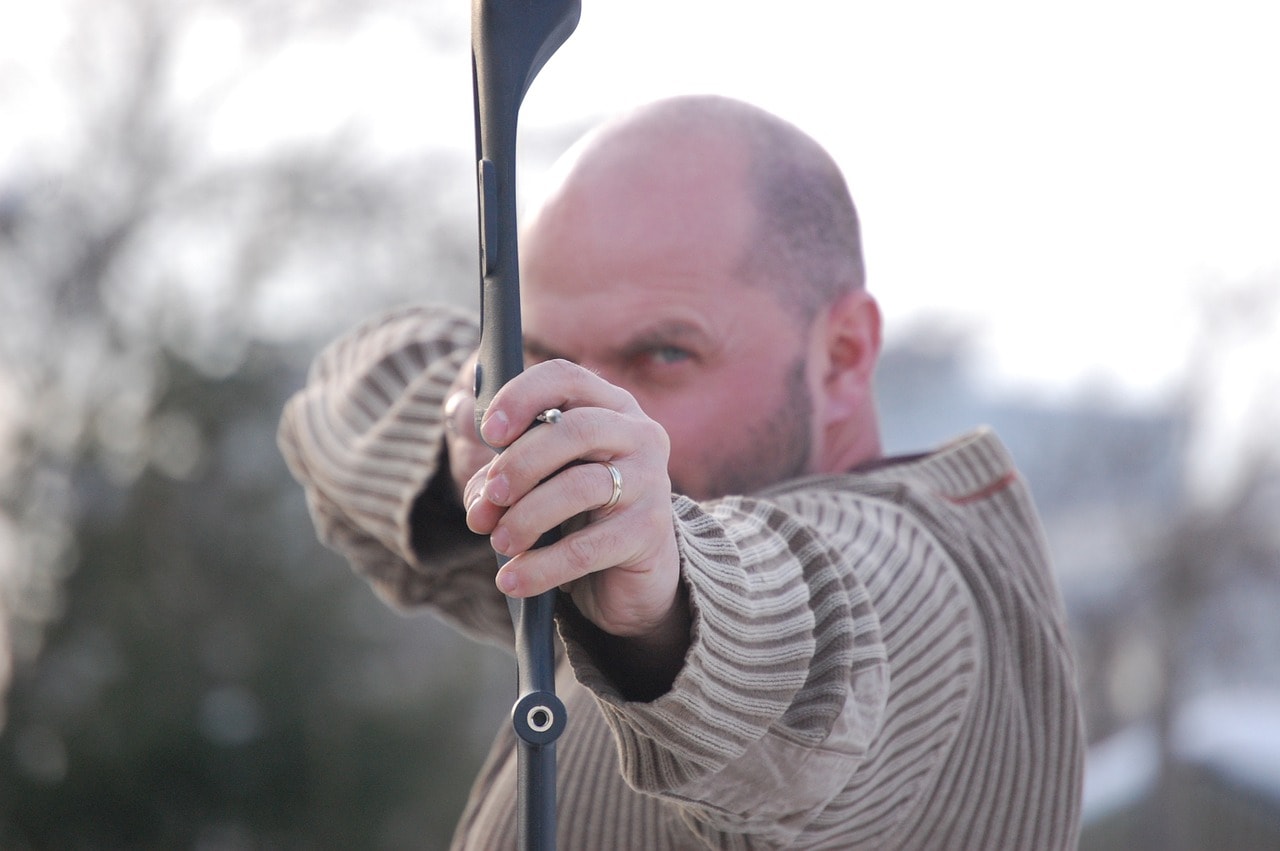Dominant Eye: What It Is and How to Find Your Dominant Eye
Last Updated on

If you’ve ever watched an inexperienced shooter, you may have noticed them closing one eye and aiming with the other. We see it in movies all the time. You might have even done this in the past. But why does that seem like the natural thing to do? We usually view the entire world through both eyes and they’re roughly equal, right?
It comes down to something known as eye dominance. Just like you have a dominant hand that you write and throw with, one of your eyes is preferential. That doesn’t mean your other eye is weaker or has reduced seeing capacity. Rather, your dominant eye is simply leading your vision. Finding your dominant eye can benefit you in various activities, and can even aid a doctor in correcting faulty vision.

Eye and Hand Dominance
Your parents probably knew very early on whether you were going to be right-handed or left-handed. Most people favor one hand over the other, using their dominant hand for all manner of activities.
Your dominant eye is pretty similar to your dominant hand. It’s the eye that leads and relays slightly more accurate information to your visual cortex with a bit more input than the other eye. You could say that your dominant eye is a bit more in tune with you.
Try this. Look at an object in front of you and alternate closing either your left eye or your right eye. Do you see how the object appears to move when switching eyes? That’s because one of your eyes is dominant, showing you the true placement of the object in relation to you. The other eye still works, but because it’s secondary, it gives you slightly different information regarding the object’s position.
But eye and hand dominance are even more closely related than you might think. In fact, for most people, their dominant hand and eye are on the same side. If you’re right-handed, your right eye is also most likely your dominant one. This isn’t a hard and fast rule though. Some people are right-handed and still left-eye dominant, though it’s a bit rare. If your dominant eye and hand are on opposite sides of the body, it’s known as cross-dominance.

Differences in Eye Dominance
Eye dominance varies from person to person. While most people favor their dominant hand for a majority of tasks, eye dominance isn’t quite so black and white because of a phenomenon known as alternating ocular dominance. Put simply, this means that one eye takes over for some functions while the remaining eye is dominant for other tasks.
Furthermore, eye dominance is on a spectrum. Some people may have an eye that’s very dominant, allowing you to see a huge difference between eyes when performing a test to determine which eye is dominant. Other people may have a much smaller degree of variance between the eyes, with their dominant eye only being slightly preferred to the other eye.
Why Does Eye Dominance Matter?
At this point, you should have a pretty solid understanding of what a dominant eye is. Why does this matter, though? In truth, it doesn’t have much of an effect on your daily life. But if you participate in certain activities such as shooting, photography, or sports, then it could be highly beneficial for you to determine and understand your own eye dominance.
Shooting

As we mentioned in the introduction, inexperienced shooters often close one eye to aim. As you’ll see when we start testing to find your dominant eye, this could result in your view of the target being far off from reality. As such, good shooters keep both eyes open, but they still sight with their dominant eye. This can be a bit confusing while learning because you’re essentially seeing double. But good shooters learn which target to fixate on for a clean shot.
If you’re cross-dominant, meaning your dominant hand and eye are on opposite sides of your body, then you’ll have a more difficult time hitting your targets. But knowing this can allow you to make some simple adjustments to greatly improve your aim.
Photography

Today, a lot of photos are taken through a digital screen, either on our phones, tablets, or digital cameras. But many professional photographers still prefer to use the viewfinder on their camera. If you do, then knowing which eye is dominant can drastically change the outcome of your photographs.
If you look through the viewfinder with your non-dominant eye, your picture will turn out different than expected. Part of your subject may be displaced or out of the frame completely. This can easily be solved by simply viewing with your dominant eye instead.
- Related read: How to Take Pictures Through Binoculars (2021 Guide)
Sports

Many sports require precision aiming, such as baseball, soccer, golf, or archery. You’ll need to get your head in exactly the right position to utilize your dominant eye for aiming, rather than your non-dominant eye, which can result in the ball or iron going somewhere you didn’t intend.
Correcting Vision
Curing several vision problems requires understanding which eye is dominant. For instance, a lazy eye or crossed eyes can be treated, but it requires the doctor to know what eye is dominant. This is even important information for treating cataracts and other similar issues.
Doctors will also test for eye dominance when performing vision correction. This could be simple contact lenses or glasses. Before correcting for near-sightedness or far-sightedness in either eye, the doctor will need to know which eye you’re relying on most.
A Simple Test to Find Your Dominant Eye
Luckily, finding your dominant eye is a rather simple task and it doesn’t require any special equipment or know-how. You can perform this test right now, right where you’re sitting.
Find a small object that’s a little distance away from you — 10-20 feet is great. Now, hold both hands out in front of you with your arms extended. Touching the thumb and pointer finger on each hand together, make a triangle with your fingers. Frame the object inside of your finger triangle, making sure it’s in the very center.
Now, close one eye and see if the object moves. If it remains in the center of your finger triangle, then the open eye is your dominant eye. But if you close one eye and the object moves so it’s no longer in the center of your finger frame, try the other eye. Whichever eye still sees the object perfectly framed between your fingers when it’s open is your dominant eye.

In Conclusion
For most people, determining which eye is dominant won’t make any revolutionary changes to your life. But if you’ve been having difficulty aiming your shots in sports, shooting, or photography, then this might be the fix you were looking for. Knowing which eye is dominant can be a great benefit in these situations, or when your vision requires correcting.
Featured Image Credit: Pixabay
About the Author Dean Eby
An avid outdoorsman, Dean spends much of his time adventuring through the diverse terrain of the southwest United States with his closest companion, his dog, Gohan. He gains experience on a full-time journey of exploration. For Dean, few passions lie closer to his heart than learning. An apt researcher and reader, he loves to investigate interesting topics such as history, economics, relationships, pets, politics, and more.
Related Articles:
How to Clean a Telescope Eyepiece: Step-by-Step Guide
What Is the Best Binocular Magnification for Hunting? Optical Features Explained
How to Clean a Refractor Telescope: Step-by-Step Guide
How to Clean a Rifle Scope: 8 Expert Tips
Monocular vs Telescope: Differences Explained (With Pictures)
What Is a Monocular Used For? 8 Common Functions
How to Clean a Telescope Mirror: 8 Expert Tips
Brightfield vs Phase Contrast Microscopy: The Differences Explained
